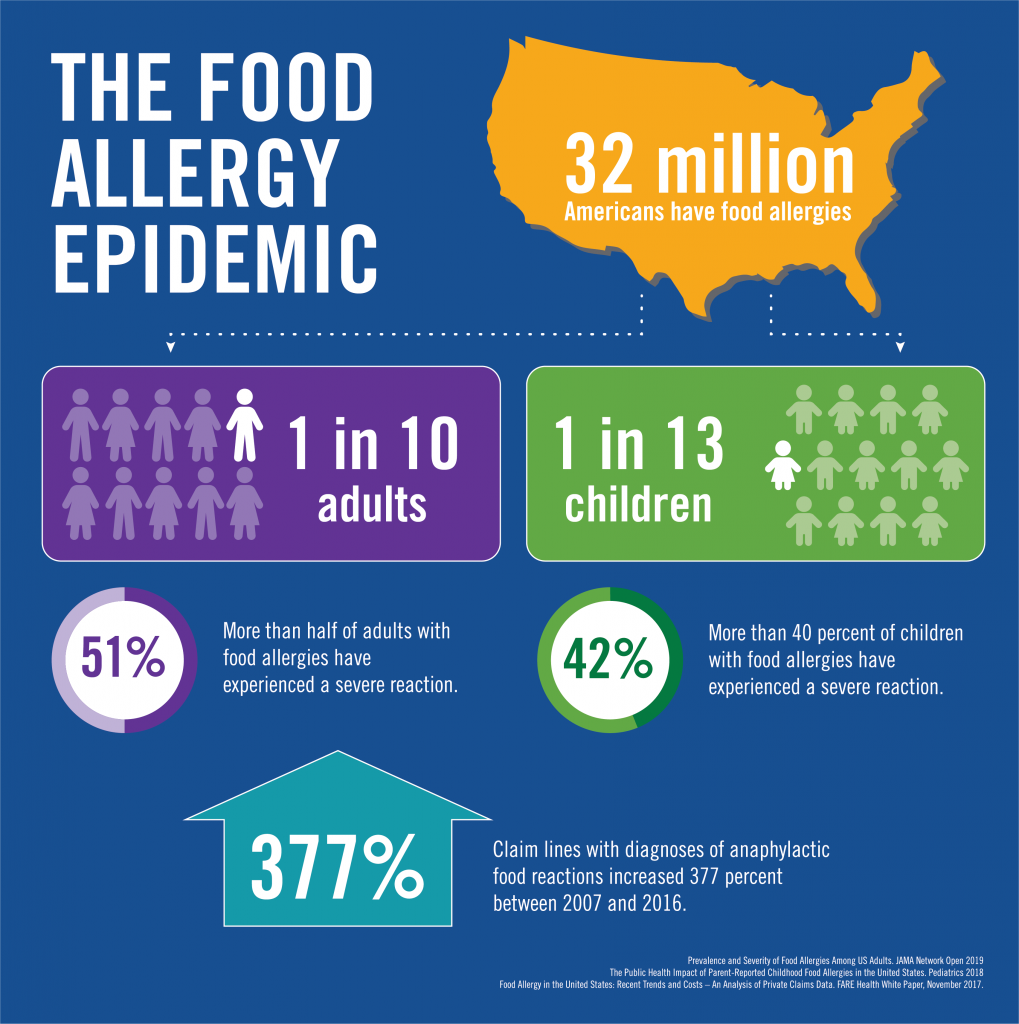Food Allergy Awareness Week aims to increase the knowledge and understanding of food allergies – by educating and promoting safety – to all those inflicted, including those at risk for life-threatening anaphylaxis.

According to Food Allergy Research and Education (FARE), about 32 million people in the U.S. have food allergies (and 5.6 million of those are children under age 18).
Likewise, the Centers for Disease Control & Prevention (CDC) reports that the prevalence of food allergy in children increased by 50 percent between 1997 and 2011. And between 1997 and 2008, the prevalence of peanut or tree nut allergy appears to have more than tripled in U.S. children.

What is a Food Allergy?
A food allergy is a specific medical condition in which exposure to a food triggers a harmful immune response. The immune response, called an allergic reaction, occurs because the immune system attacks proteins in the food that are normally harmless. The proteins that trigger the reaction are called allergens.
- Learn the best practices for serving a food allergic customer including: the role of management, how to properly prepare an allergen safe meal, and the front of the house and back of the house responsibilities.
- Reg Price: $15.00
- Enter Code "train10off" at Checkout
The symptoms of an allergic reaction to food can range from mild (itchy mouth, a few hives) to severe (throat tightening, difficulty breathing). Anaphylaxis is a serious allergic reaction that is sudden in onset and can cause death.
A food allergy should not be confused with a food intolerance or other nonallergic food reactions. Various epidemiological surveys have indicated that almost 80 percent of people who are asked if they have a food allergy respond that they do when, in fact, they do not have a true IgE-mediated food allergy.
Food Intolerance
Food intolerance refers to an abnormal response to a food or additive, but it differs from an allergy in that it does not involve the immune system. For example, people who have recurring gastrointestinal problems when they drink milk may say they have a milk allergy. But they really may be lactose intolerant.
Food intolerances never involve the immune system. This means that while they can severely impact your quality of life, they are not life threatening.
Signs and Symptoms of a Food Allergy
Symptoms of a food allergy usually develop within about an hour after eating the offending food. The most common signs and symptoms of a food allergy include:
- Hives, itching, or skin rash
- Swelling of the lips, face, tongue and throat, or other parts of the body
- Wheezing, nasal congestion, or trouble breathing
- Abdominal pain, diarrhea, nausea, or vomiting
- Dizziness, lightheadedness, or fainting

In a severe allergic reaction to food—called anaphylaxis—you may have more extreme versions of the above reactions. Or you may experience life-threatening signs and symptoms such as:
- Swelling of the throat and air passages that makes it difficult to breathe
- Shock, with a severe drop in blood pressure
- Rapid, irregular pulse
- Loss of consciousness
The Big-8 Allergenic Foods
A group of the eight major allergenic foods is often referred to as the Big-8 and comprises:
- milk,
- eggs,
- fish,
- crustacean shellfish,
- tree nuts,
- peanuts,
- wheat and
- soybeans.
These foods account for about 90% of all food allergies in the United States and must be declared on any processed food according to the USA food allergen labeling act (FALCPA).

Treatment of food allergies
The treatment or management of food allergies can be approached in two different ways:
- First, allergic reactions can be treated pharmacologically to resolve the symptoms.
- But, second and preferably, the avoidance of the allergenic food(s) will prevent the occurrence of allergic reactions.
